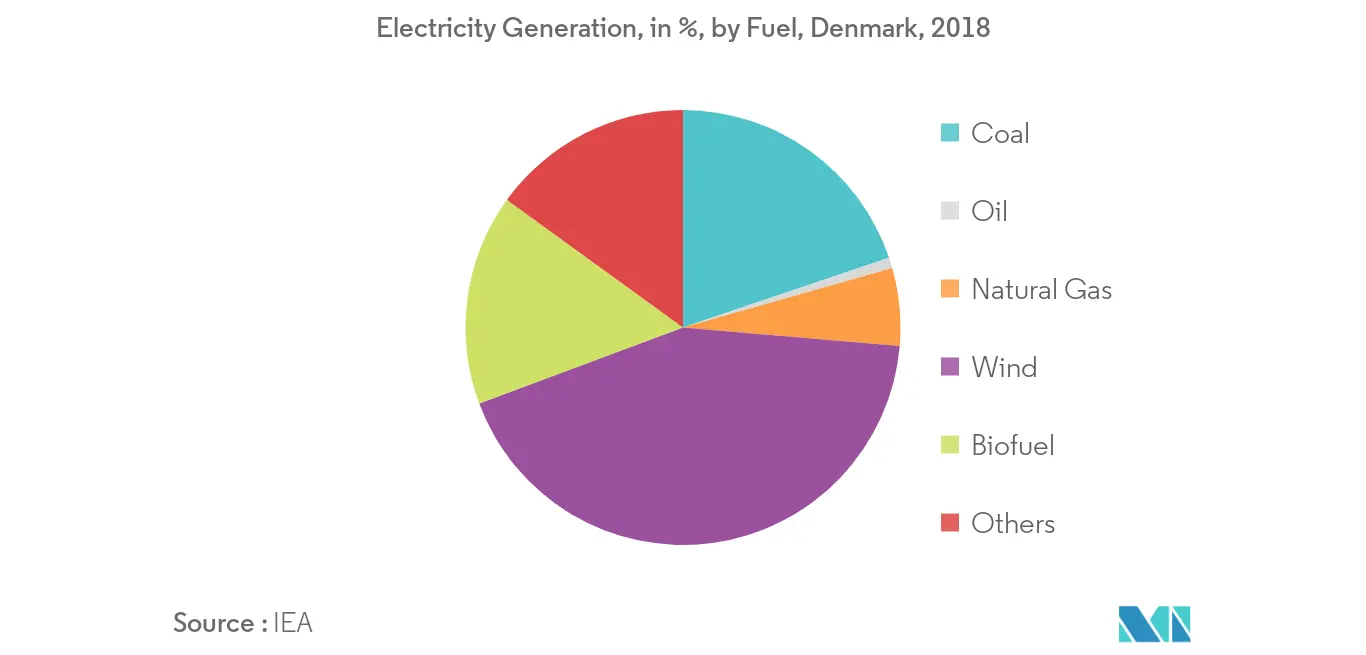Market Trends of Denmark Wind Energy Industry
This section covers the major market trends shaping the Denmark Wind Energy Market according to our research experts:
Onshore Wind Energy to Dominate the Market
- Onshore wind energy is the prominent segment under the Danish wind energy sector that holds nearly 4.4 GW of installed capacity, in 2019. With an increase in demand for cleaner energy, the segment is expected to grow further with the implementation of new onshore wind projects.
- Onshore wind turbines are easier to install, and are low in investment, as compared to the offshore. According to the Energy Information Administration (EIA), offshore wind is 2.6 times more expensive than onshore wind power and is 3.4 times more expensive than power produced by a natural gas combined-cycle plant.
- As of 2019, the country has several onshore wind projects. Thorup-Sletten, the largest onshore windfarm, is one of the prominent upcoming projects. The project is likely to have nearly 77 MW installed capacity and is expected to get commission during the forecast period.
- Moreover, Denmark awarded a 165 MW onshore wind energy project, in 2018. The completion of the project is expected to expand the onshore wind energy market of the country in the near future.

Increasing Electricity Consumption is Likely to Drive the Market
- Consumption of electricity in Denmark is expected to get an increase at a rate of around 2.1% per annum, which is likely to increase the total consumption of electricity to nearly 310 TWh by 2025.
- With government participation and the target of reducing the uses of fossil fuel completely by 2050, it is obvious to have expansion in the renewable form of electricity in the country.
- As in 2018, almost 6408 GWh of electricity gets produced from coal, and it is estimated that with increasing investment in renewables, especially in wind and solar PV, electricity generation from renewables is likely to get increase during the forecast period.
- It is expected that by 2030, the government is planning to complete the shutdown of coal-fired power plants, which in turn is expected to increase the country's dependency on renewable sources. By 2030, electricity consumption is estimated to grow up to 480 terawatt hour (TWh) and is expected to reduce CO2 emission to nearly 99g/KWh.


